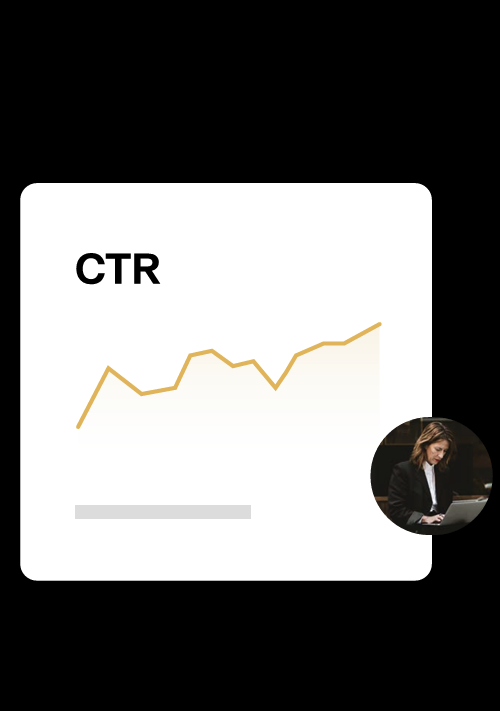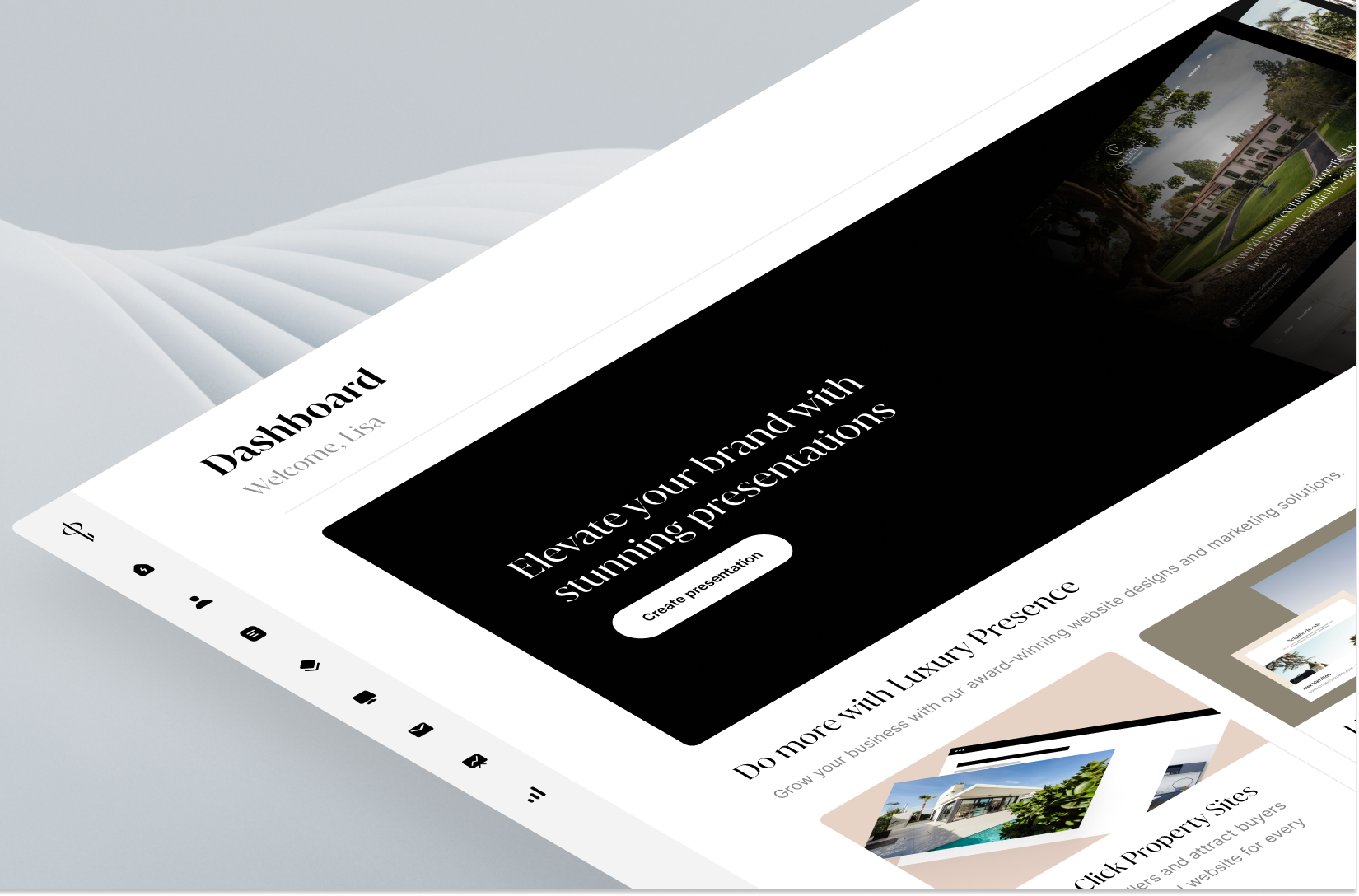With its ability to foster connections, showcase expertise, and drive lead generation, real estate newsletter marketing has become an indispensable tool for agents seeking to establish themselves as trusted advisors in the eyes of clients and prospects alike. In this article, we delve into the key strategies, best practices, and benefits of real estate newsletters, providing actionable insights to help agents harness the full potential of this powerful marketing channel.
Find It Fast
What is a real estate newsletter?
A real estate newsletter is a valuable communication tool used by agents and brokers to stay connected with clients, prospects, and other industry stakeholders. As opposed to other email marketing campaigns, newsletters are typically distributed on a regular basis—such as weekly, bi-weekly, or monthly.
These email communications provide subscribers with relevant and timely information about the real estate market, local trends, and industry news. By delivering valuable content directly to their audiences’ inboxes, real estate newsletters help agents establish themselves as trusted authorities in their field, nurture relationships, and ultimately generate leads and referrals.
Why you should be sending real estate newsletters
Real estate agents should leverage newsletters in their marketing for several compelling reasons:
- Newsletters keep agents top of mind with their audience. By consistently delivering valuable content directly to subscribers’ inboxes, agents remain visible and memorable, increasing the likelihood that recipients will think of them when it comes time to buy or sell property.
- They provide an opportunity to build and nurture relationships with clients, prospects, and other stakeholders.
- By sharing useful and relevant information, agents demonstrate their expertise, credibility, and commitment to serving their audience’s needs, fostering trust and loyalty over time. Through newsletters, agents can showcase their knowledge of the real estate market, local trends, and industry insights and position themselves as trusted authorities.
- By including calls to action (CTAs) encouraging recipients to reach out for more information, schedule a consultation, or explore listings, agents can convert newsletter subscribers into leads and ultimately into clients.
- Links to relevant articles, blog posts, or property listings in newsletters can drive traffic to agents’ websites, increasing their visibility and expanding their online presence.
- Compared to an ad campaign, email newsletters are generally more cost effective and — assuming you have a decent CRM — tend to be more customizable.
Nurture leads effortlessly with email templates
Our free e-book offers customizable resources and tips to keep your database engaged, move leads through the funnel, and close deals effectively.

Best practices for real estate newsletters
Using real estate newsletter marketing effectively requires a strategic approach. Here are some key guidelines.
Define your audience
Before you even begin writing your first word, understand who you’re talking to. Use your understanding of your target audience’s demographics, preferences, and needs to tailor your newsletter content. Segmentation allows you to divide your subscriber base into distinct groups based on criteria such as:
- Location preferences
- Property type
- Budget range
- Stage of the homebuying/selling process
- Engagement level
- Demographics
- Interests
- Past behavior
- Client status (former, current, prospective)
By segmenting subscribers, you can tailor newsletters to meet the specific needs and interests of each group, providing hyperlocal market updates, personalized property recommendations, and relevant advice. This enables you to deliver the right message to the right audience at the right time, ultimately driving better results and fostering stronger relationships with subscribers.
Provide value
Offer engaging content that educates, informs, and entertains your audience. This could include market updates, tips for buyers and sellers, and local news and events.
Strike a balance between promotional and informative content. This approach not only keeps your audience engaged but also ensures that your messaging remains relevant to their needs and interests and adds value to your subscribers’ lives beyond just selling them a product or service. It helps prevent subscriber fatigue and reduces the risk of opt-outs, while also fostering long-term relationships built on mutual respect and trust.
Maintain a consistent schedule
Establish a regular schedule for sending out newsletters, whether it’s weekly, bi-weekly, or monthly. Consistency helps build anticipation and keeps your brand top of mind with subscribers. Use A/B testing to determine the best cadence for each segment of your audience. Your cooler leads don’t need to be inundated with newsletters while your active house hunters probably want to hear from you much more often.
Also test with what days to send your newsletters and even what time of day. Do more people open your newsletter when it’s sent on a Wednesday evening as opposed to Saturday morning?
Recycle and repurpose content
Quality content takes time to craft so make sure your writing is working as hard as you are. If certain blog posts are working well and resonating with certain audiences, use that in your newsletters. For example, if your buyer’s guide has great page views, repurpose it into a series of email newsletters that not only educate your audience, but also nurture leads.
Craft compelling subject lines
Attention-grabbing subject lines entice recipients to open your newsletter. Keep them concise, relevant, and intriguing to increase open rates. Creating a sense of urgency is also an effective tactic. A/B test different styles of subject lines so that data is informing your efforts. Also consider adding emojis to see what works best for your audience.
Here are some examples:
- “Exclusive: Your Insider’s Guide to {neighborhood} Real Estate Trends”
- “Unlock Your Dream Home: 🔥 Hot New Listings Just In!”
- “Don’t Miss Out: Limited-Time Offer on Your Dream Home”
- “Discover the Secrets 🤫 to Maximizing Your Home’s Value”
- “Your Weekly Dose of Real Estate Wisdom: Market Updates, Tips & Trends”
- “Ready to Upgrade? Explore the Top Luxury Properties in {city}”
Optimize design and layout
Ensure your newsletter is visually appealing, mobile-responsive, and easy to navigate. Use eye-catching images, clear headings, and white space to enhance readability. Consult your brand book to align your newsletter’s design with your business’s overall look and feel.
Include specific calls to action (CTAs)
Encourage reader engagement and action by including clear CTAs throughout your newsletter. Whether it’s scheduling a showing, exploring listings, or following you on social media, make it easy for recipients to take the next step. Here are some examples of effective CTAs:
- Ready to find your dream home? Contact me today to schedule a personalized consultation and start your home search journey!
- Explore our latest listings and discover your perfect property. Click here to view available homes and schedule a showing.
- Looking to sell your home? Let’s discuss your goals and create a customized marketing plan to maximize your property’s value. Call me to get started!
- Want to hear about the hottest listings right away? Subscribe to our newsletter for up-to-date alerts as soon as they hit the market.
- Curious about the current value of your home? Request a complimentary market analysis to discover how much your property is worth in today’s market.
- Follow us for daily updates, behind-the-scenes glimpses, and exclusive content. Connect with us on {social media platform} today!
- Have questions about buying, selling, or investing in real estate? I’m here to help! Respond to this email anytime for expert advice and guidance.
Monitor and analyze performance
Measuring the effectiveness of newsletter marketing involves tracking various metrics to gauge subscriber engagement, conversion rates, and overall campaign performance. Here are eight key metrics and methods to measure the effectiveness of your newsletter marketing:
- Open rate: This metric indicates the percentage of recipients who opened your newsletter. A high open rate suggests that your subject lines and sender name are compelling enough to entice subscribers to open your emails.
- Click-through rate: CTR measures the percentage of recipients who clicked on one or more links within your newsletter. It reflects how engaging and relevant your content is to your audience and can help you understand which topics or CTAs resonate most with subscribers.
- Conversion rate: This represents the percentage of subscribers who completed a desired action after clicking on a link in your newsletter, such as signing up for a webinar, scheduling a consultation, or making a purchase. It provides insights into the effectiveness of your newsletter in driving specific outcomes.
- Subscriber growth rate: Monitor your contact list’s growth over time to assess the effectiveness of your subscriber acquisition strategies. A healthy subscriber growth rate indicates that your content and promotions are attracting new readers and retaining existing ones.
- Unsubscribe rate: Keep an eye on the percentage of subscribers who opt out of receiving future newsletters. A high unsubscribe rate may indicate that your content is not meeting readers’ expectations or that your email frequency is too high.
- Bounce rate: This is the percentage of emails that were not delivered to recipients’ inboxes due to invalid email addresses or other issues. A high bounce rate may suggest that your email list needs cleaning or that your email delivery practices require optimization. Note that emails delivered to the recipient’s spam or junk folder are technically considered “delivered” because they reached the recipient’s email server and were placed in a folder, albeit not the primary inbox.
- Engagement metrics: Beyond clicks, consider other engagement metrics such as time spent reading your newsletter, shares on social media, or replies to your emails. These qualitative indicators can provide additional insights into how subscribers are interacting with your content.
- Revenue generated: If your newsletter campaigns are directly tied to sales, track the dollars created from subscribers who clicked on links in your emails. This metric helps determine the ROI of your newsletter marketing efforts.
By regularly monitoring these metrics and analyzing the performance of your newsletter campaigns, you can identify areas for improvement, optimize your content and strategies, and ultimately achieve better results from your newsletter marketing efforts.
Comply with regulations
Ensure compliance with applicable laws and regulations, such as GDPR and CAN-SPAM, by providing a clear opt-in process, including an unsubscribe option, and respecting subscribers’ privacy preferences.

Types of real estate newsletters + 55 content ideas
We’ve collected dozens of content ideas for the best email marketing newsletters, divided up into categories. Use this to start brainstorming ideas for your own content.
Advice, tips, how-to newsletters
By providing helpful guidance on various aspects of real estate, agents demonstrate their expertise and commitment to client success, fostering stronger relationships.
21 subject line ideas for advice newsletters
- “10 Essential Tips for First-Time Homebuyers”
- “How to Stage Your Home for a Quick Sale: Expert Tips and Tricks”
- “Navigating the Home Inspection Process: What Buyers Need to Know”
- “The Ultimate Guide to Negotiating the Best Price for Your Home”
- “5 Common Mistakes to Avoid When Selling Your Home”
- “Understanding Mortgage Options: A Beginner’s Guide”
- “DIY Home Improvement Projects to Increase Property Value”
- “Tips for Finding the Right Real Estate Agent for Your Needs”
- “Preparing Your Home for an Open House: Dos and Don’ts”
- “The Art of Pricing Your Home Right: Strategies for Sellers”
- “Maximizing Curb Appeal: Simple Ways to Boost Your Home’s Exterior”
- “How to Buy a Home in a Seller’s Market: Strategies for Success”
- “Understanding Home Appraisals: What Buyers and Sellers Need to Know”
- “Tips for Investing in Rental Properties: Getting Started”
- “Creating a Budget for Homeownership: Managing Expenses Wisely”
- “Moving Day Survival Guide”
- “Real Estate Glossary: Every Word You Need to Know”
- “Improving Energy Efficiency in Homes: Your Guide to Smart Features”
- “Downsizing Tips for Empty-Nesters and Seniors”
- “It’s Tax Season: Maximize Tax Deductions for Homeowners, Investors, and Sellers”
- “Home Renovation Financing Options for Every Project on Your List this Year”
Market update newsletters
Market updates make good real estate newsletters because they provide valuable information, showcase expertise, foster client trust, and keep clients informed and engaged in the dynamic world of real estate. Your MLS and local Realtor Association will have great resources for this information, but also check with your brokerage, source local news, and collect your own insights, informed by your experience.
12 ideas for market update newsletters
- Monthly, quarterly, and yearly market snapshot
- Neighborhood spotlight
- Luxury market analysis
- First-time homebuyer market insights
- Investment property analysis
- New construction market update
- Rental market report
- Foreclosure and distressed property analysis
- Demographic shifts and market impact
- Market forecast and predictions
- Market comparisons
- Hot market areas
Newsletters featuring community content
Sharing local events and news in real estate newsletters is a win-win strategy that strengthens client relationships, enhances the neighborhood’s appeal, and fosters a sense of community cohesion, ultimately benefiting both residents and real estate agents. Generally, a “save the date” works best, allowing your audience enough time to plan around attending, but recaps of local events you’ve been to can also make for engaging content.
14 ideas for community-related newsletters
- Local festival and fair highlights
- Charity and fundraising events
- Neighborhood block parties
- Farmer’s markets and artisan fairs
- Outdoor concerts and movie nights
- Sporting events and tournaments
- Community workshops and classes
- Neighborhood clean-up days
- Seasonal celebrations
- Pet adoption and animal welfare events
- Historical tours and cultural experiences
- Community garden programs
- Health and wellness events
- Educational events for families and children
Listings newsletters
Showcasing new listings demonstrates the breadth and depth of your inventory, highlighting your expertise and ability to connect clients with desirable properties. If you don’t have enough listings on your own, showcase listings from fellow agents in your brokerage. By regularly featuring new listings, you reinforce your reputation as a trusted advisor who is actively working to meet client needs and preferences.
7 subject line ideas for listing content newsletters
- “Hot Off the Market: Your Weekly New Listings Update”
- “Just In: Explore Our Latest Property Listings!”
- “Fresh Finds: Discover Our Newest Listings Today”
- “Your Exclusive Look: New Listings Unveiled”
- “Unlock Your Dream Home: Our Latest Listings Revealed”
- “Sneak Peek: Be the First to Know About These New Listings”
- “New Week, New Listings: Your Guide to What’s Available”

Real estate newsletters + Luxury Presence
Unlock the full potential of your real estate newsletter with the perfect marketing partner by your side. From captivating web design to innovative campaign solutions, we’re here to elevate your brand and amplify your reach.
Don’t settle for ordinary – partner with us and take your real estate business to extraordinary heights. Contact us today to discuss how we can tailor our services to meet your unique needs and goals.



